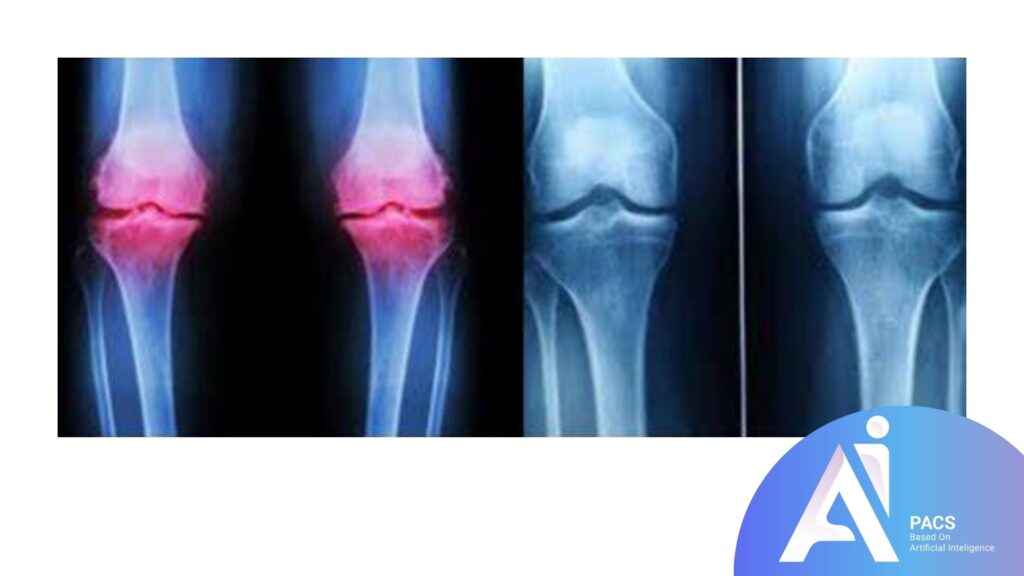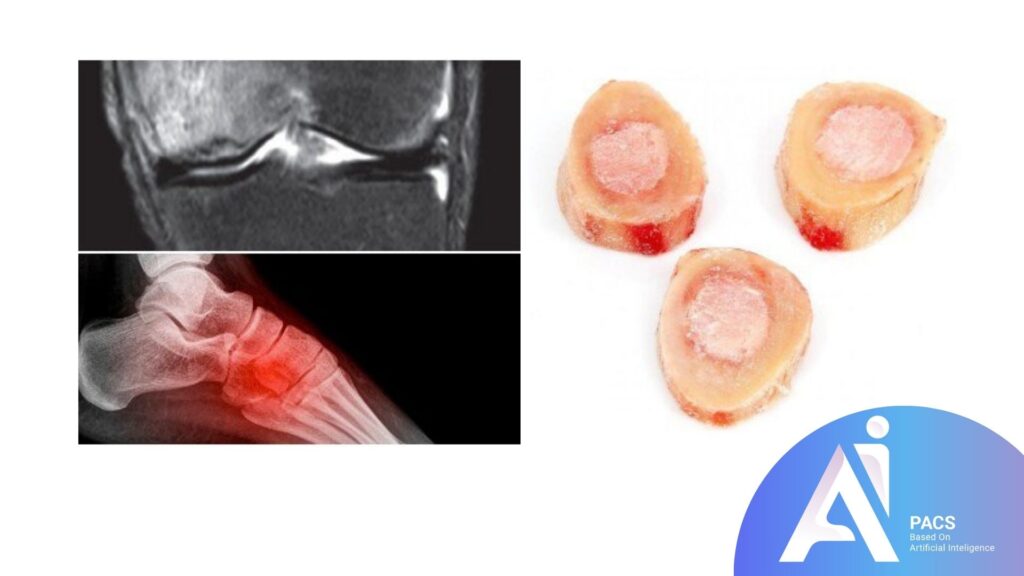Bone marrow edema is a condition that often shows up as a bright signal on MRI scans, indicating an abnormal accumulation of fluid in the bone marrow. While it can be associated with a wide range of issues, from trauma and inflammation to degenerative diseases like arthritis, its presence is a sign of underlying stress or injury to the bone. Understanding what bone marrow edema means, how it’s diagnosed, and the best treatment options available is crucial for effective recovery and long-term health. This article will explore the causes, symptoms, and management of bone marrow edema to clarify this important medical finding.
What is Bone Marrow Edema?
Bone marrow edema (BME) refers to the accumulation of excess fluid within the bone marrow, which is detected as a bright signal on certain MRI sequences, such as T2-weighted and STIR. It indicates an inflammatory or stress response within the bone due to various causes, ranging from minor injuries to more serious underlying conditions. BME is not a disease itself, but rather a symptom of an underlying issue that may need medical attention, depending on its severity and cause.

Types of bone marrow edema
Traumatic Bone Marrow Edema
This type of BME is usually caused by physical injury, such as fractures, sprains, or direct impacts on the bone. Athletes often experience this form of edema following sports injuries. It usually resolves with proper treatment and rest.
Inflammatory Bone Marrow Edema
Associated with autoimmune diseases like rheumatoid arthritis or infections, this type of edema results from chronic inflammation within the bone marrow. It often accompanies other systemic symptoms of inflammation, such as joint pain and swelling.
Degenerative Bone Marrow Edema
This occurs in conditions like osteoarthritis or avascular necrosis, where gradual wear and tear or restricted blood flow to the bone leads to tissue damage and edema. It is more common in older individuals or those with chronic joint diseases.
Idiopathic Bone Marrow Edema
In some cases, bone marrow edema develops without a clear cause. This is referred to as idiopathic and may require further investigation to rule out hidden underlying issues.
How is Bone Marrow Edema Detected on MRI?
MRI (Magnetic Resonance Imaging) is the most effective imaging modality for detecting bone marrow edema (BME) due to its ability to provide detailed images of soft tissues, including the bone marrow. It is particularly sensitive to changes in fluid content, making it ideal for identifying edema.
Specific MRI sequences that used for visualizing edema
Certain MRI sequences are more sensitive to the presence of fluid, which is key in detecting bone marrow edema. These include:
- T2-Weighted Sequences:
T2-weighted images are designed to highlight fluid. Bone marrow edema appears as a bright or hyperintense area on T2-weighted sequences due to the high water content within the edematous bone. - STIR (Short Tau Inversion Recovery) Sequences:
STIR sequences are highly sensitive to fluid and are often used to suppress the fat signal in bone marrow, making edema stand out even more clearly. This sequence is particularly useful for identifying subtle or small areas of bone marrow edema that may not be as evident on standard T2-weighted images.
Description of what BME looks like on an MRI scan
On an MRI scan, bone marrow edema is typically seen as areas of increased signal intensity (brightness) on T2-weighted or STIR images. The brighter appearance is due to the accumulation of fluid within the bone marrow. In contrast, normal bone marrow has a more uniform, lower-intensity signal. The exact location of the edema on the scan can vary, but it usually correlates with the site of injury, inflammation, or degeneration.
- Location: Bone marrow edema can appear in any bone, but it is most commonly found in weight-bearing joints (e.g., knees, hips, ankles) or bones affected by trauma or degenerative conditions.
- Signal Characteristics: Edema appears as a bright, patchy, or diffuse area, often near a site of injury (e.g., fractures, ligament tears), or within joints in cases of arthritis or other conditions.
The ability of MRI to detect and differentiate between normal and edematous bone marrow helps physicians diagnose the underlying cause and guide treatment decisions more accurately.
Common causes and associated conditions
Traumatic injuries
Bone marrow edema commonly results from trauma, such as fractures, ligament tears, or significant impact injuries. In these cases, the edema signals stress or damage to the bone and surrounding structures. Even in the absence of a visible fracture, microfractures or bone contusions may cause bone marrow edema, particularly in athletes or individuals involved in high-impact activities.
Degenerative conditions
In degenerative conditions, such as osteoarthritis, the constant wear and tear on the joints leads to cartilage breakdown and eventual stress on the bone, causing bone marrow edema. Avascular necrosis, where a loss of blood supply to the bone results in bone tissue death, also leads to bone marrow edema as the bone tries to compensate for the lack of nourishment and subsequent damage.
Inflammatory diseases
Chronic inflammatory diseases like rheumatoid arthritis, which affect the joints and bones, can cause bone marrow edema due to persistent inflammation. Similarly, infections like osteomyelitis (bone infection) can result in inflammation and swelling within the bone marrow, often accompanied by pain and other systemic symptoms. These conditions typically require targeted treatments to reduce inflammation and address the underlying cause of the edema.
Symptoms and Clinical Presentation
Bone marrow edema (BME) typically presents with localized pain, swelling, and stiffness in the affected area, especially around joints. The pain often worsens with activity and improves with rest. Patients may also experience tenderness, reduced mobility, and weakness, particularly in weight-bearing bones like the knees or hips. BME is usually a result of trauma, inflammation, or degenerative conditions like arthritis. Identifying and addressing the underlying cause is key to managing the symptoms effectively.

Diagnosis and Evaluation
The primary method for diagnosing bone marrow edema (BME) is through MRI, as it provides detailed images of soft tissues, including bone marrow. MRI can clearly detect areas of edema, making it the gold standard for diagnosis. However, other diagnostic tools are often used in conjunction with MRI to assess the underlying cause of BME and rule out other conditions.
X-rays
While X-rays cannot detect bone marrow edema, they are useful in identifying fractures, bone deformities, or signs of osteoarthritis that may be causing the edema. X-rays are often the first imaging test ordered, especially after trauma.
CT Scans
CT scans provide detailed images of bone structures and are helpful in diagnosing complex fractures or bone lesions. However, like X-rays, they cannot directly visualize bone marrow edema but can help assess the surrounding bone conditions.
Blood Tests
Blood tests are often used to identify underlying conditions such as infections (e.g., osteomyelitis), inflammation (e.g., rheumatoid arthritis), or other systemic diseases that could be contributing to bone marrow edema. Markers like ESR, CRP, and rheumatoid factor may be elevated in inflammatory or infectious conditions.
By combining MRI with these additional diagnostic tools, doctors can accurately diagnose the cause of bone marrow edema and guide appropriate treatment.
Treatment Options for Bone Marrow Edema
Managing bone marrow edema (BME) involves addressing the underlying cause and alleviating symptoms. Treatment can range from conservative measures to more invasive interventions, depending on the severity and origin of the edema.
Conservative treatments
Rest and Activity Modification:
Resting the affected area and avoiding high-impact activities are crucial for allowing the bone to heal. Modifying daily activities to reduce stress on the affected bone or joint helps prevent worsening of the condition.
Physical Therapy:
Physical therapy can help improve strength, flexibility, and range of motion in the affected area, aiding in recovery while minimizing strain on the bones and joints.
Pain Management:
Over-the-counter pain relievers, such as NSAIDs (non-steroidal anti-inflammatory drugs), can help reduce pain and inflammation associated with bone marrow edema.
Invasive treatments (joint injections, surgical interventions)
Joint Injections:
Corticosteroid injections can be used to reduce inflammation and pain in cases of bone marrow edema associated with conditions like arthritis or trauma. These injections provide temporary relief but do not address the underlying cause of the edema.
Surgical Interventions:
In cases where BME is caused by structural problems, such as severe fractures or avascular necrosis, surgery may be required to correct the underlying issue. This could involve joint realignment, repair of fractures, or decompression of the bone to restore proper blood flow.
Novel therapies (stem cell therapy, bisphosphonates)
Stem Cell Therapy:
Stem cell therapy is an emerging treatment option for regenerating damaged bone tissue. In some cases, it can promote healing in areas affected by bone marrow edema, especially in degenerative conditions like osteoarthritis.
Bisphosphonates:
Bisphosphonates, commonly used to treat osteoporosis, have shown promise in treating BME by reducing bone resorption and promoting bone strength. This treatment is particularly useful in conditions like avascular necrosis.
Managing the underlying cause of edema
Addressing the root cause of bone marrow edema is essential for long-term relief. For example:
- Injury-related BME: Healing the fracture or ligament injury will reduce the edema.
- Arthritis-related BME: Managing arthritis through medication or lifestyle changes can help control inflammation and reduce BME.
- Infection-related BME: Treating infections with antibiotics is crucial to resolving edema caused by osteomyelitis.
Conclusion
Bone marrow edema (BME) is a significant finding on MRI that often signals underlying bone or joint stress, injury, or disease. While not a standalone condition, it serves as an important marker for various issues like trauma, arthritis, or inflammatory diseases. Early diagnosis using MRI, alongside other diagnostic tools, is key to identifying the root cause of BME. Treatment options range from conservative methods like rest and physical therapy to more invasive approaches, including joint injections and surgical interventions. Novel therapies, such as stem cell treatments, are also showing promise. Managing the underlying cause is essential for effective recovery and preventing future complications, ensuring long-term bone and joint health.


